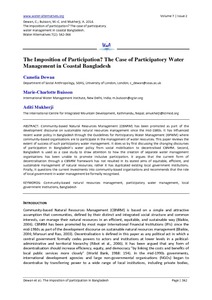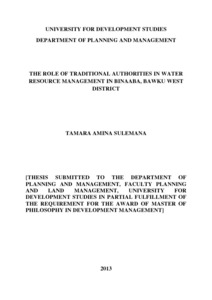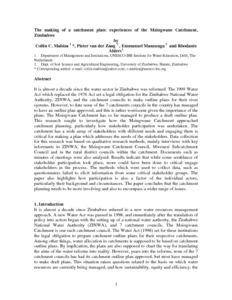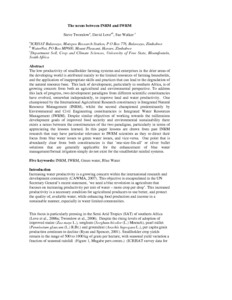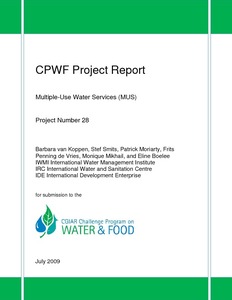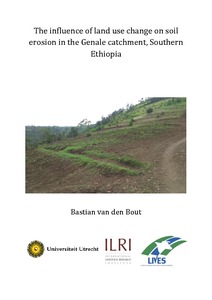gestão da água
AGROVOC URI:
The role of traditional authorities in water resources management in Binaaba, Bawku West District
Current water reforms in most African countries focus on decentralizing water management to the water users, as a way of improving water governance. The target of these reforms is equity, efficiency and sustainability. Unfortunately the reforms tend to concentrate on the use of statutory laws, and give little consideration to the already existing traditional practices. This report presents the findings of a case that examined traditional water management practices in Binaaba located in the Bawku West District of the Upper East Region of Ghana.
The making of a catchment plan: Experiences of the Mzingwane Catchment Zimbabwe
The politics of IWRM in southern Africa
This article offers an approach to the study of the evolution, spread and uptake of integrated water resources management (IWRM). Specifically, it looks at the flow of IWRM as an idea in international and national fora, its translation and adoption into national contexts, and the on-the-ground practices of IWRM.
The imposition of participation?: the case of participatory water management in coastal Bangladesh
Community-based Natural Resources Management (CBNRM) has been promoted as part of the development discourse on sustainable natural resources management since the mid-1980s. It has influenced recent water policy in Bangladesh through the Guidelines for Participatory Water Management (GPWM) where community-based organisations are to participate in the management of water resources. This paper reviews the extent of success of such participatory water management.
The multiple-use water services (MUS) project
The CPWF-supported project ‘Models for implementing multiple-use water supply
systems for enhanced land and water productivity, rural livelihoods and gender equity’
(‘CPWF-MUS’) innovated, tested, and documented homestead-scale and communityscale
models for Multiple Use water Services in 30 rural and peri-urban sites in 8
countries: the Andes (Bolivia and Colombia), Indus-Ganges (India, Nepal), Limpopo
(South Africa and Zimbabwe), Mekong (Thailand) and Nile (Ethiopia). Learning alliances
The power to resist: irrigation management transfer in Indonesia
In the last two decades, international donors have promoted Irrigation Management Transfer (IMT) as an international remedy to management problems in government irrigation systems in many developing countries. This article analyses the political processes that shape IMT policy formulation and implementation in Indonesia. It links IMT with the issue of bureaucratic reform and argues that its potential to address current problems in government irrigation systems cannot be achieved if the irrigation agency is not convinced about the need for management transfer.
The influence of land use change on soil erosion in the Genale catchment, southern Ethiopia
Soil erosion forms one of the main causes of land degradation in third world countries. The subject of this research was the inuence of land use and land use change on soil erosion in the upper Genale catchment, Southern Ethiopia. A land use classification was implemented for Landsat satellite images from 1985, 1993, 2003 and 2015. Using a hydro- logical model of the catchment, created with the Soil and Water Assessment Tool (SWAT), an erosion model was developed. The results of an erosion survey, which focused on diferent land uses, were used for calibration and validation.

